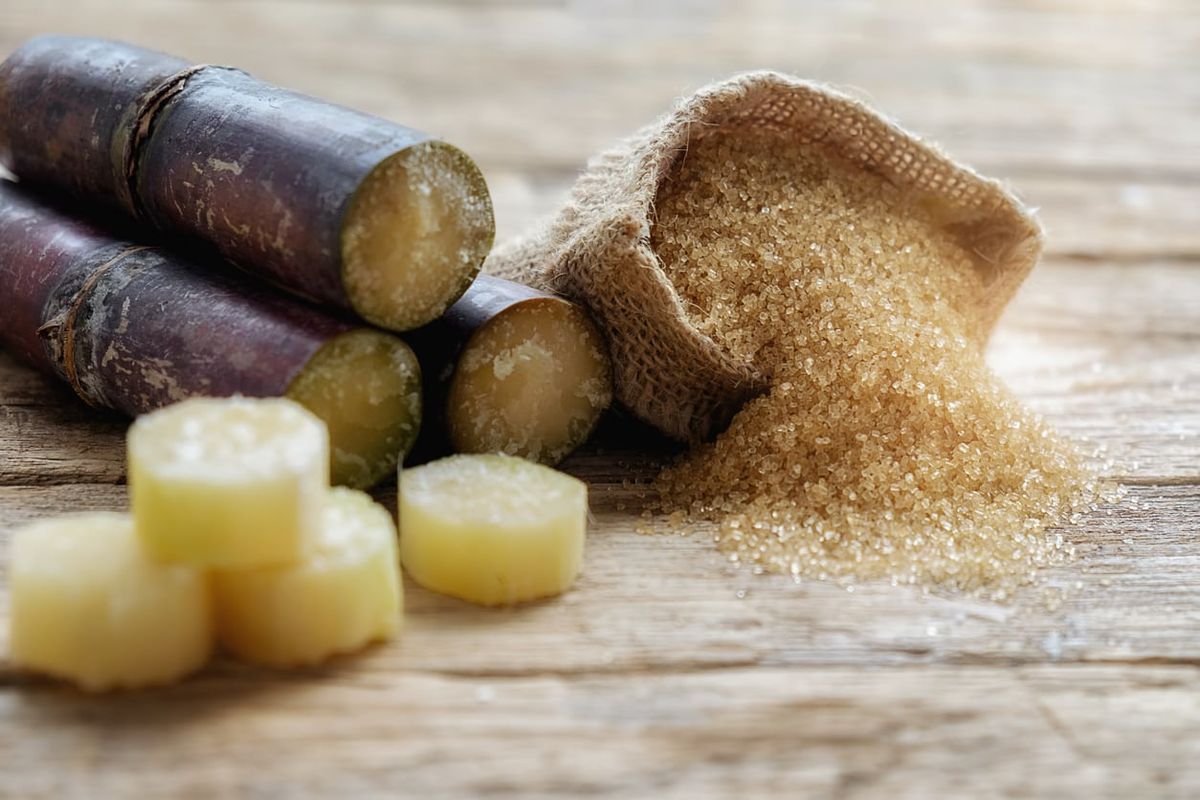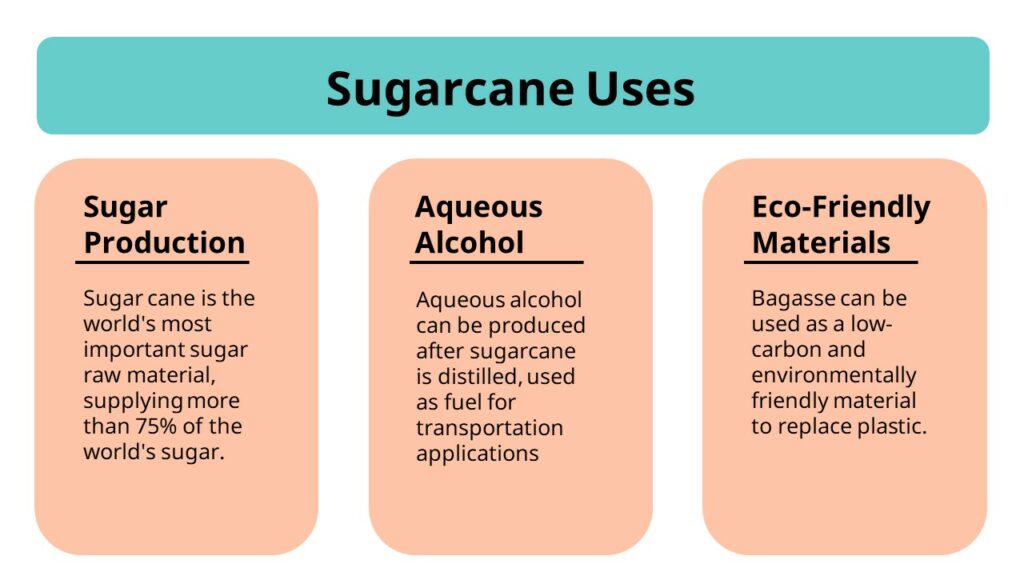Everything About Sugar Canes: What Are Sugar Canes Utilized For and Their Role in Worldwide Agriculture?
Sugar canes function as a cornerstone of international farming, primarily acknowledged for their function in sugar manufacturing. They additionally add to the development of byproducts like molasses and ethanol. These facets not only support numerous sectors yet also impact financial stability in rural regions. The farming of sugar canes faces substantial ecological challenges. Comprehending their complex duty motivates more exploration into their farming practices and sustainability initiatives.
The Agricultural Refine of Sugar Cane Growing
Although sugar cane farming might vary by area, the essential agricultural process continues to be constant. The initial step entails selecting high-yielding selections ideal for regional climates. Preparation of the dirt is vital, usually calling for husbandry and the enhancement of fertilizers to improve fertility. Growing commonly occurs during the stormy period, with farmers using either whole stalks or cuttings to establish brand-new crops.As the plants grow, they require attentive treatment, consisting of weed control, pest administration, and watering, depending upon the ecological conditions. Farmers check the sugar walking cane's development cycle, which normally extends 10 to 24 months, prior to collecting. Harvesting is labor-intensive, typically performed manually or with specialized equipment, guaranteeing minimal damages to the stalks. Adhering to harvest, the cane is transported to refining facilities. This thorough growing procedure not just sustains regional economies but likewise plays a substantial function in worldwide agricultural methods, adding to food and power products.
Sugar Production: From Walking Stick to Crystal
The journey of sugar production begins the minute freshly collected sugar walking cane comes to processing centers. The very first step involves cutting the walking stick and washing to prepare it for extraction. Utilizing high-pressure rollers, the juice is drawn out from the crushed walking stick, leading to a sweet liquid referred to as sugarcane juice. This juice undertakes explanation, where pollutants are eliminated through the enhancement of lime and heat.Next, the made clear juice is focused by steaming it down to create a thick syrup. This syrup is after that taken shape by cooling down, making it possible for sugar crystals to create. The crystallized sugar is separated from the staying syrup, referred to as molasses, through centrifugation.Finally, the sugar crystals are cleaned and dried, resulting in the acquainted granulated sugar (What Are Sugar Canes Used For). This procedure transforms raw sugar walking stick right into a product that is indispensable to different cooking and industrial applications, highlighting the significance of sugar in global farming
Biofuels and Sugar Canes: A Lasting Future
As the world increasingly looks for lasting power options, sugar walking sticks have become an appealing resource for biofuels. The biomass stemmed from sugar walking canes can be transformed right into ethanol, an eco-friendly fuel choice that markedly reduces greenhouse gas emissions contrasted to fossil gas. This procedure not just offers a cleaner power source however likewise advertises energy self-reliance for numerous countries.In enhancement, sugar walking stick cultivation supports country economic climates by developing tasks in both farming and biofuel production sectors. Using sugar walking sticks for biofuel production additionally encourages farming diversification, which can boost dirt health and wellness and minimize dependency on single crops. In addition, the byproducts of sugar cane handling can be utilized for power generation, additionally adding to a lasting energy cycle. As countries endeavor to meet renewable resource targets, sugar canes are positioned to play a crucial duty in forming a more sustainable future in the biofuel landscape.
The Function of Sugar Canes in Drink Manufacturing
Sugar walking canes play a significant role in beverage production, offering as a key active ingredient in rum and contributing to the sweet taste of numerous sodas. Additionally, their natural juices are utilized in different drinks, boosting taste and charm. This flexibility underscores the relevance of sugar walking canes in the global beverage sector.
Sugar Cane in Rum
Rum production is elaborately linked to the farming of sugar cane, a vital crop that offers the essential fermentable sugars required for fermentation. This process starts with the extraction of juice from harvested sugar walking sticks, which is then either fermented straight or refined into molasses. Yeast is included in convert the sugars into alcohol, resulting in a diverse array of rum styles, from light to dark ranges. The geographical area where the sugar cane is grown greatly affects the flavor profile of the rum, with variables such as dirt type and climate having fun vital duties. Nations like Barbados, Jamaica, and Cuba are renowned for their rum production, reflecting the historic and cultural value of sugar walking stick within the worldwide beverage sector.
Soft Drinks Sugar Resource

Natural Juice Manufacturing Utilizes
Along with its considerable function in soft beverage manufacturing, sugar walking stick is additionally pivotal in the natural juice market. The juice removed from sugar walking cane, referred to as walking stick juice, is celebrated for its natural sweet taste and one-of-a-kind flavor account. This juice is commonly taken in fresh in different regions, specifically in tropical nations, where it is delighted in as a rejuvenating beverage. Furthermore, cane juice works as a base ingredient in a series of all-natural fruit juices and healthy smoothies, boosting both taste and dietary worth. Its all-natural buildings make it an eye-catching option to sweetening agents, appealing to health-conscious customers. Generally, sugar cane's versatility in juice production underscores its importance in contemporary drink offerings worldwide.
Developments in Sugar Walking Stick Byproducts
Technologies in sugar walking cane results are paving the means for sustainable solutions in various sectors. Biofuels stemmed from sugar cane use an alternate energy source, while developments in lasting product packaging are decreasing reliance on standard materials. These developments highlight the versatility and click over here now potential of sugar walking stick beyond its key use in drink production.
Biofuels From Sugar Walking Cane
Just how can the results of sugar walking stick add to sustainable power remedies? The conversion of sugar cane into biofuels presents a promising method for eco-friendly energy. By making use of the fibrous residue, recognized as bagasse, manufacturers can produce bioethanol with fermentation processes. This bioethanol can function as a lasting option to nonrenewable fuel sources, minimizing greenhouse gas discharges and dependence on non-renewable resources. Additionally, molasses, one more by-product, can be fermented to generate biofuels, optimizing source effectiveness. The energy created from sugar cane not just gives a cleaner gas source but additionally enhances the total economic practicality of sugar production. By integrating biofuel manufacturing into their procedures, sugar walking cane industries can play a crucial duty ahead of time sustainable energy remedies worldwide.
Sustainable Product Packaging Solutions
Lasting product packaging solutions are significantly being developed from sugar walking stick byproducts, showcasing the versatility of this farming staple. Innovations such as naturally degradable plastics originated from bagasse, the fibrous residue left after juice removal, are getting traction. These materials supply an environment-friendly option to conventional plastics, reducing dependence on fossil gas and reducing carbon footprints. Furthermore, sugar cane-based packaging is compostable, damaging down normally without hurting the environment. Business are now discovering these alternatives to straighten with consumer demand for sustainability. As understanding of plastic pollution grows, the fostering of sugar cane-derived product packaging is anticipated to climb, placing sugar walking canes as an essential gamer in the shift to greener packaging remedies in different sectors.
Economic Effect of Sugar Walking Stick Farming

Although sugar cane farming has deep roots in many economies, its financial impact extends far past agricultural manufacturing. This plant offers as a considerable income source for millions of farmers worldwide, specifically in developing countries where agriculture is a key livelihood. Sugar cane adds to local economic climates via work production in cultivation, processing, and harvesting. The sector likewise boosts growth in relevant fields such as transport, tools manufacturing, and food processing.Furthermore, sugar cane is a crucial player in international trade, affecting global markets and costs. Nations that generate sugar walking stick frequently count on exports to boost their financial stability. The by-products of sugar walking cane, such as ethanol and molasses, branch out revenue streams for farmers and include worth to the agricultural sector. Generally, the financial ramifications of sugar walking cane farming are profound, affecting not just farmers but additionally whole communities and national economic situations.
Environmental Considerations in Sugar Cane Farming
While sugar walking cane farming plays a vital role in many economies, it likewise increases considerable ecological concerns that can not be overlooked. The extensive usage of plant foods and pesticides in sugar cane farming often leads to dirt degradation and water air pollution. Runoff from these chemicals can infect neighboring water bodies, harming aquatic ecological communities. Additionally, the monoculture methods common in sugar walking stick farming minimize biodiversity, making communities extra at risk to bugs and diseases.Deforestation is one more essential concern, as land is usually cleared to give way for sugar haciendas, bring about habitat loss for wild animals and boosted carbon exhausts. The high water intake needed for sugar cane irrigation can strain neighborhood water resources, particularly in arid areas. As global need for sugar remains to climb, resolving these ecological challenges becomes critical to ensure sustainable methods in sugar cane cultivation.
Regularly Asked Concerns
What Are the Nutritional Benefits of Sugar Cane?
The dietary advantages of sugar walking cane largely include its high carb content, supplying energy. Additionally, it has vitamins, minerals, and antioxidants that may support general health, though small amounts is crucial due to its sugar content.
How Does Sugar Walking Cane Affect Local Ecosystems?
Sugar walking stick farming can significantly affect local ecological communities by changing land use, impacting biodiversity, and needing substantial water sources. Furthermore, it might result in soil degradation and pesticide runoff, interfering with surrounding environments and wildlife populations.
What Is the Background of Sugar Cane Cultivation?

Exist Alternatives to Sugar Walking Cane for Sugar Manufacturing?
Alternatives to sugar walking stick for sugar manufacturing include sugar beetroots, corn, and different exotic plants like sorghum and agave (What Are Sugar Canes Used For). These crops provide varied sources of sweetness, each with distinct cultivation demands and environmental impacts
How Do Climate Patterns Impact Sugar Walking Stick Yields?
Climate patterns considerably influence sugar walking stick yields with temperature variations, rains amounts, and seasonal cycles. Drought or too much rains can image source impede development, while suitable problems enhance photosynthesis, ultimately influencing the amount and top quality of the harvest. The journey of sugar manufacturing starts the minute freshly harvested sugar walking stick shows up at refining centers. The taken shape sugar is divided from the remaining syrup, known as molasses, through centrifugation.Finally, the sugar crystals are washed and dried, resulting in the acquainted granulated sugar. Rum production is intricately connected to the cultivation of sugar walking stick, a vital plant that provides the needed fermentable sugars required for fermentation. Furthermore, the monoculture practices widespread in sugar walking stick farming lower biodiversity, making ecological communities more vulnerable to insects and diseases.Deforestation is another important problem, as land is usually cleared to make way for sugar haciendas, leading to habitat loss for wild animals and raised carbon discharges. Alternatives to sugar walking cane for sugar production include sugar beets, corn, and numerous tropical plants like sorghum and agave.